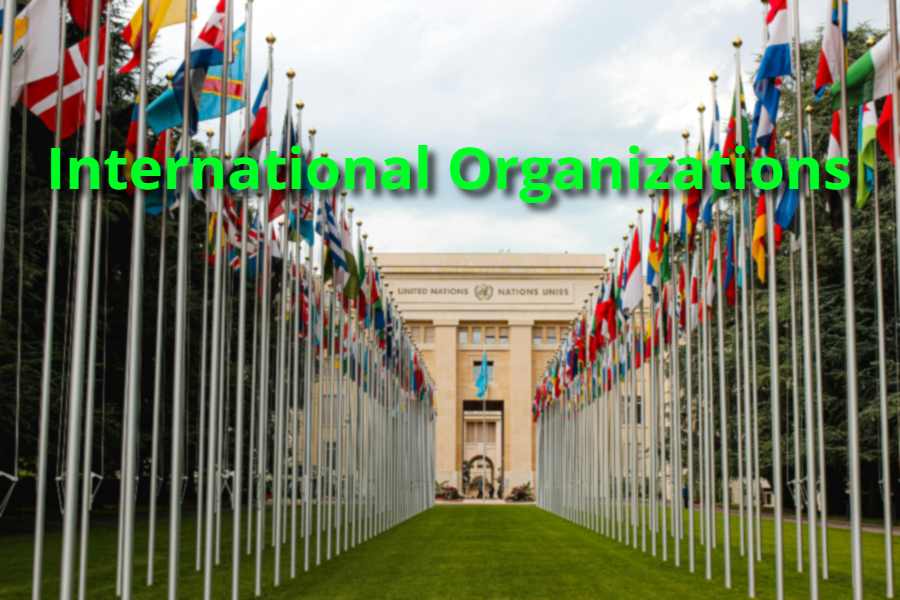
International organizations are essential entities that operate across borders to address global challenges, foster cooperation, and promote peace and security. These organizations, composed of member states or other entities, work together to address issues such as human rights, climate change, economic development, and global health. With the growing interconnectedness of the world, the role of international organizations has become more critical than ever.
From the United Nations (UN) to the World Health Organization (WHO), these bodies strive to bring together countries, non-governmental organizations (NGOs), and the private sector to solve problems that no single nation can address alone. Their work is often complex, involving diplomacy, policy-making, humanitarian aid, and the implementation of global standards. In this article, we will examine the structure, function, and impact of international organizations, explore the challenges they face, and highlight key trends shaping their future.
The Structure and Purpose of International Organizations
International organizations are typically established through treaties or agreements between nations, with specific mandates guiding their work. These organizations vary in size, scope, and purpose, but all aim to foster cooperation among countries to address global issues. For example, the United Nations (UN) is a large multilateral organization composed of multiple agencies, while the World Trade Organization (WTO) focuses specifically on regulating international trade. Each organization’s structure is designed to address its unique goals, whether it’s promoting peace, advancing trade, combating climate change, or improving global health.

The governance structure of international organizations is typically composed of member states that elect leaders and representatives to make decisions based on shared goals. For instance, the UN has a General Assembly, where all member states participate, and a Security Council that addresses issues related to international peace and security. The World Bank, on the other hand, is governed by a Board of Governors representing its member countries. Understanding these governance frameworks is crucial for comprehending how international organizations operate and make decisions that shape global policy, thereby fostering cooperation between nations for the common good.
Funding and Sustainability of International Organizations
International organizations are primarily funded through contributions from member states, private donations, and grants from governments or other international entities. For example, the United Nations (UN) relies on funding from its member countries, with each state contributing based on its economic capacity. These funds are essential for the organization to fulfill its various missions, including providing humanitarian aid, implementing global health initiatives, and addressing environmental challenges.
However, the funding model also presents challenges. Disagreements over financial contributions and political influence can undermine the sustainability of international organizations. Inconsistent contributions and fluctuating support can lead to financial instability, making it difficult for these organizations to plan long-term initiatives. Moreover, reliance on government funding can sometimes limit their ability to operate effectively, particularly when national interests conflict with global cooperation.
To ensure long-term sustainability, international organizations must explore alternative funding models, such as private sector partnerships, endowments, or social enterprises. Improving financial transparency and accountability will also be crucial for maintaining trust and securing consistent support from donors and member states.
The Global Impact of International Organizations
International organizations play a vital role in global governance and policy-making. Some key areas of their influence include:
- Conflict Resolution: Organizations like the UN mediate and resolve international conflicts by deploying peacekeepers, facilitating negotiations, and promoting diplomatic solutions.
- Humanitarian Aid: The Red Cross, WHO, and other organizations provide emergency relief during natural disasters, armed conflicts, or humanitarian crises, helping communities recover and rebuild.
- Sustainable Development: The World Bank, UNDP, and similar entities work to promote economic growth and environmental sustainability in developing nations, focusing on poverty reduction, education, and clean energy.
These organizations not only shape global policies but also have a direct and profoundly positive impact on the lives of millions, addressing issues such as poverty, disease, and inequality. Their efforts ensure that global challenges are addressed through cooperation, fostering equitable solutions that benefit people worldwide.
Challenges Faced by International Organizations
While international organizations are crucial to global governance, they encounter several challenges that can impede their effectiveness. These include:

- Political Tensions: Countries often prioritize their national interests over international cooperation, which can lead to stalled initiatives or a lack of consensus on important issues. This makes it challenging for organizations to operate cohesively and achieve their global objectives.
- Funding Shortages: Many international organizations rely on voluntary contributions from member states, and inconsistent funding can undermine their ability to implement programs effectively. Fluctuating financial support can lead to uncertainty, preventing organizations from planning long-term projects.
- Bureaucratic Inefficiency: Large international organizations can become bogged down by bureaucracy, which slows decision-making processes. This inefficiency makes it harder for these organizations to respond quickly to global crises or emerging challenges.
- Sovereignty Concerns: Countries may be hesitant to relinquish control over specific issues, particularly in sensitive areas such as security or human rights. This reluctance can hinder the implementation of international agreements and limit the effectiveness of these organizations.
Addressing these challenges requires stronger governance, consistent funding, and enhanced collaboration among member states.
Emerging Trends in International Organizations
This section highlights key trends shaping the evolution of international organizations:
- Digital Transformation: Technology is playing a crucial role in enhancing the efficiency and outreach of international organizations. Online platforms for governance and data-driven decision-making are becoming increasingly vital for improving operations and engagement.
- Private Sector Partnerships: Many international organizations are partnering with private sector entities to leverage resources, innovation, and expertise. These collaborations enable organizations to drive global development initiatives more effectively.
- Focus on Sustainability and Climate Change: The growing threat of climate change is leading international organizations to prioritize environmental sustainability. Many are launching green initiatives to promote eco-friendly practices and mitigate environmental damage.
- Decentralization and Regional Cooperation: As global governance becomes more complex, there is a noticeable shift toward decentralization. Regional cooperation is gaining momentum as a way to address local challenges with tailored solutions.
By embracing these emerging trends, international organizations can adapt to the evolving global landscape and continue tackling worldwide challenges efficiently.
Conclusion
International organizations play a crucial role in tackling global challenges, including conflict resolution, economic development, and sustainability. As the world becomes increasingly interconnected, these organizations must adapt to evolving demands for cooperation and innovation. By embracing emerging trends, ensuring sustainable funding, and improving efficiency, international organizations can continue to play a vital role in promoting peace, prosperity, and global well-being. Their ability to collaborate across borders and address complex issues will remain essential to solving the pressing problems of the future. Through innovation and effective resource management, international organizations can drive meaningful change and create a more harmonious, sustainable world.
FAQ’s
What are international organizations?
International organizations are entities created by multiple countries or other stakeholders to address global issues through cooperation. They work on matters like peacekeeping, trade, human rights, and development.
How are international organizations funded?
International organizations are funded through contributions from member states, donations from private entities, and sometimes grants from other international bodies or governments.
What are the challenges faced by international organizations?
Challenges include political tensions between member states, inconsistent funding, bureaucratic inefficiency, and issues related to national sovereignty.
How do international organizations impact global governance?
They help mediate conflicts, promote economic development, ensure environmental sustainability, and improve public health, among other global issues.
What is the future of international organizations?
The future of international organizations will involve greater digital transformation, partnerships with the private sector, and a stronger focus on sustainability and climate change initiatives.





